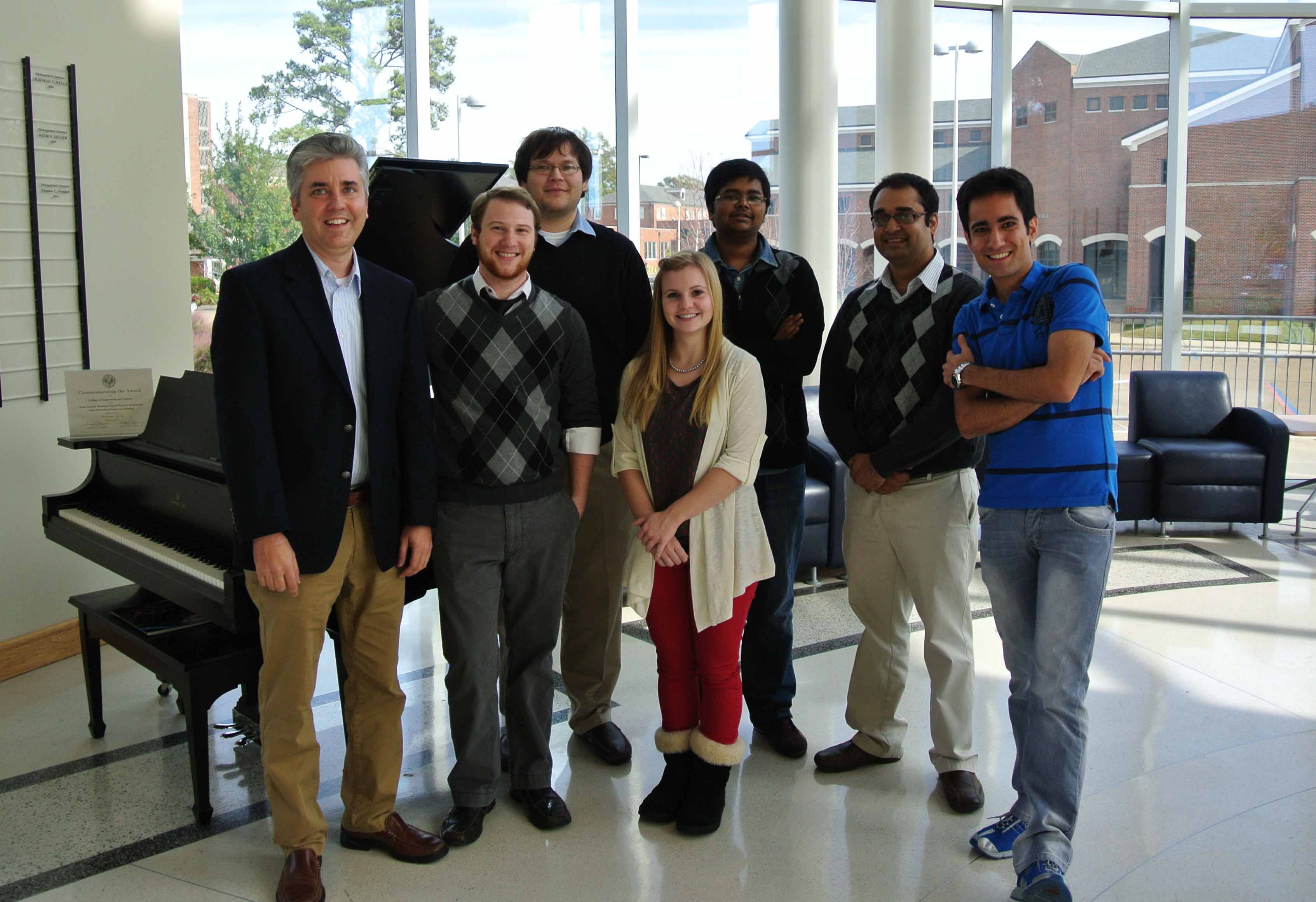People

Group 2012-2013: Patrick, Austin, Isidro, Rachel, Raghu, Pratik, and Ramtin.
Current Students
PRATIK ADHIKARI
Biomedical Engineering - Ph. D.
RAMTIN ARDESHIRI
Biomedical Engineering - Ph. D
RACHEL BAKER
Biomedical Engineering - B. S. of Engineering Candidate
Working under the Louisiana Undergraduate Research Assistantship, Rachel Baker is developing a prototype and technique to quantify localized edema using non-invasive multi-wavelength photoplethysmography. The objective of this project is to create a quantitative clinical measurement using readily available equipment and FDA-approved procedures such as intravenous injection of indocyanine green. Rachel will graduate with a Bachelor’s degree from Louisiana Tech in May of 2014 and plans to continue her education through a PhD. program specializing in biomechanics/orthopedics.
AUSTIN HOGGATT
Biomedical Engineering - M. S
ISIDRO MAGAÑA
Biomedical Engineering - Ph. D.
Conducts pre-clinical studies of optically active gold nanoparticles (used in cancer therapies) to observe pharmacokinetic parameters in an effort to predict tumor accumulation. This data is also contributed to collaborative efforts aimed at modeling the circulation, extravasation and retention of gold nanoparticles in tumors. Future graduate work will include modifying current nanomaterials to create a particle that can be noninvasively monitored and used as an emergency blood replacement therapy.
RAGHUVARA YENDLURI
Molecular Science and Nanotechnology - M. S.
Past Graduates
GREGORY JAMES MICHALAK
Biomedical Engineering - Ph. D.
JACQUELINE LOCHE
Biomedical Engineering - M. S.
PRANITHA VANGALA
Biomedical Engineering - M. S.
MEGAN CARROLL (SMALLEY)
Biomedical Engineering - B. S. of Engineering Candidate
BRYANT HOLLINS
Biomedical Engineering - B. S. of Engineering Candidate
HEATHER ANDERSON
Biomedical Engineering - B. S. of Engineering Candidate
ERIC WOODARD
Biomedical Engineering - B. S. of Engineering Candidate

.jpg)